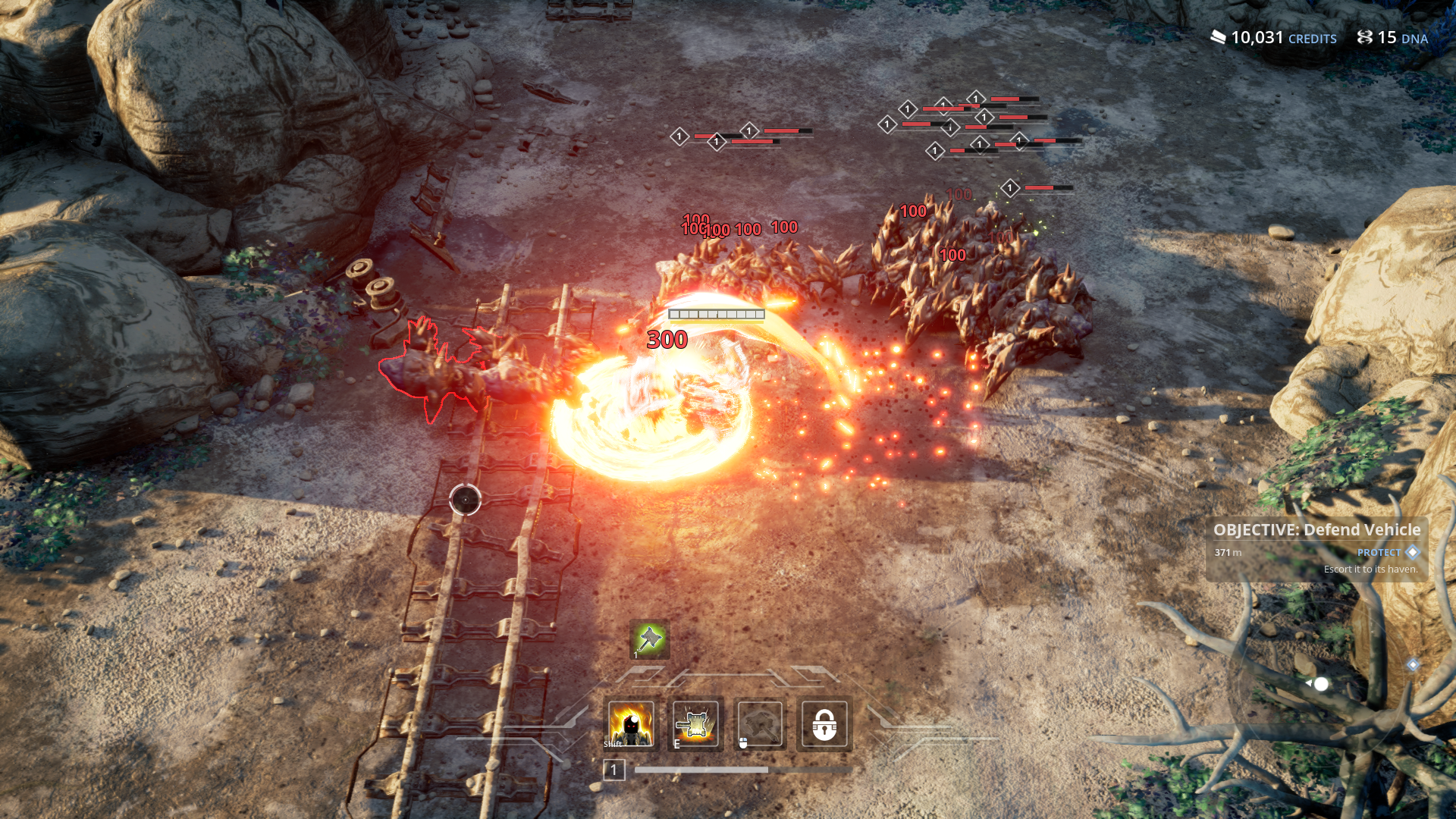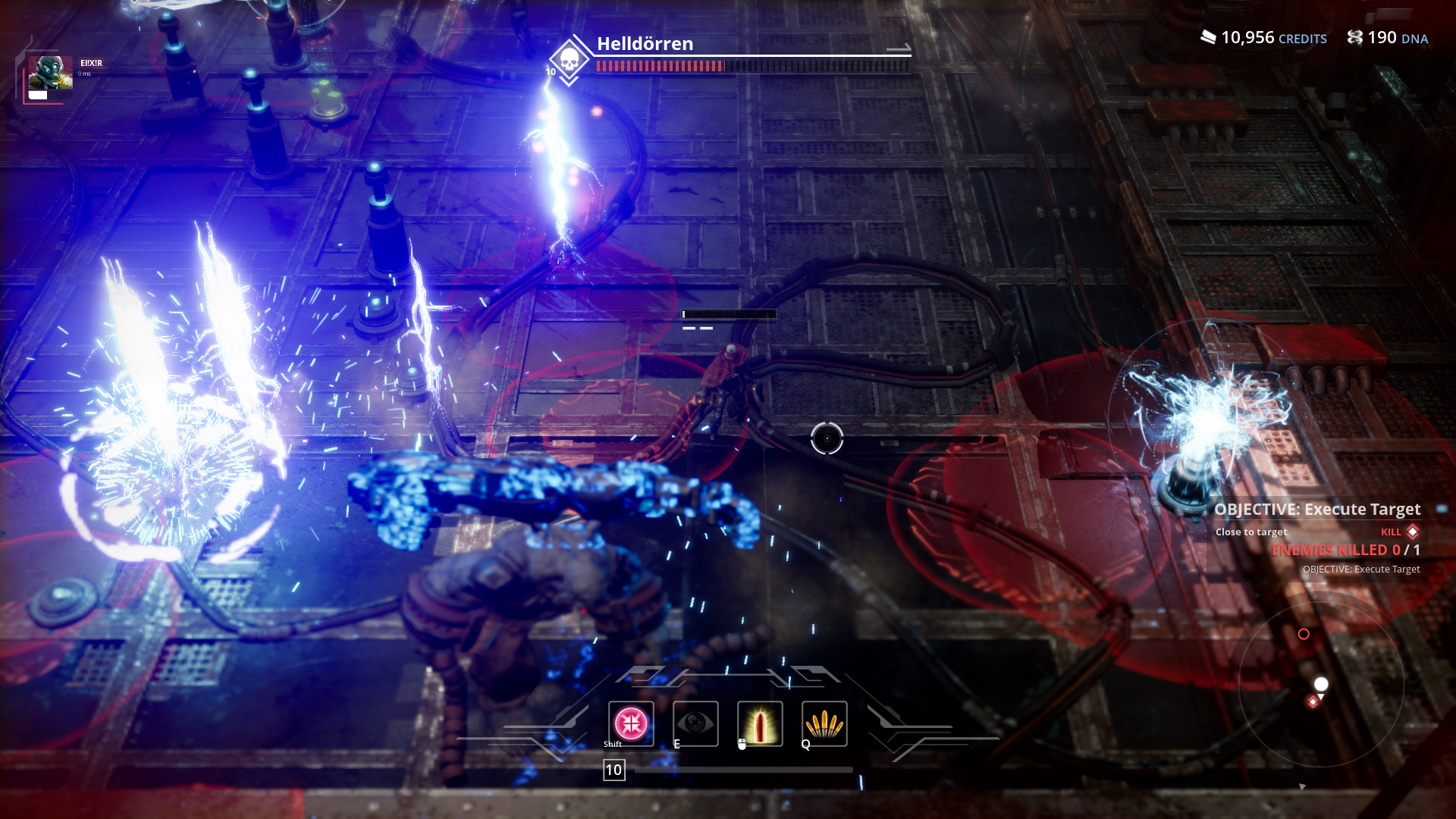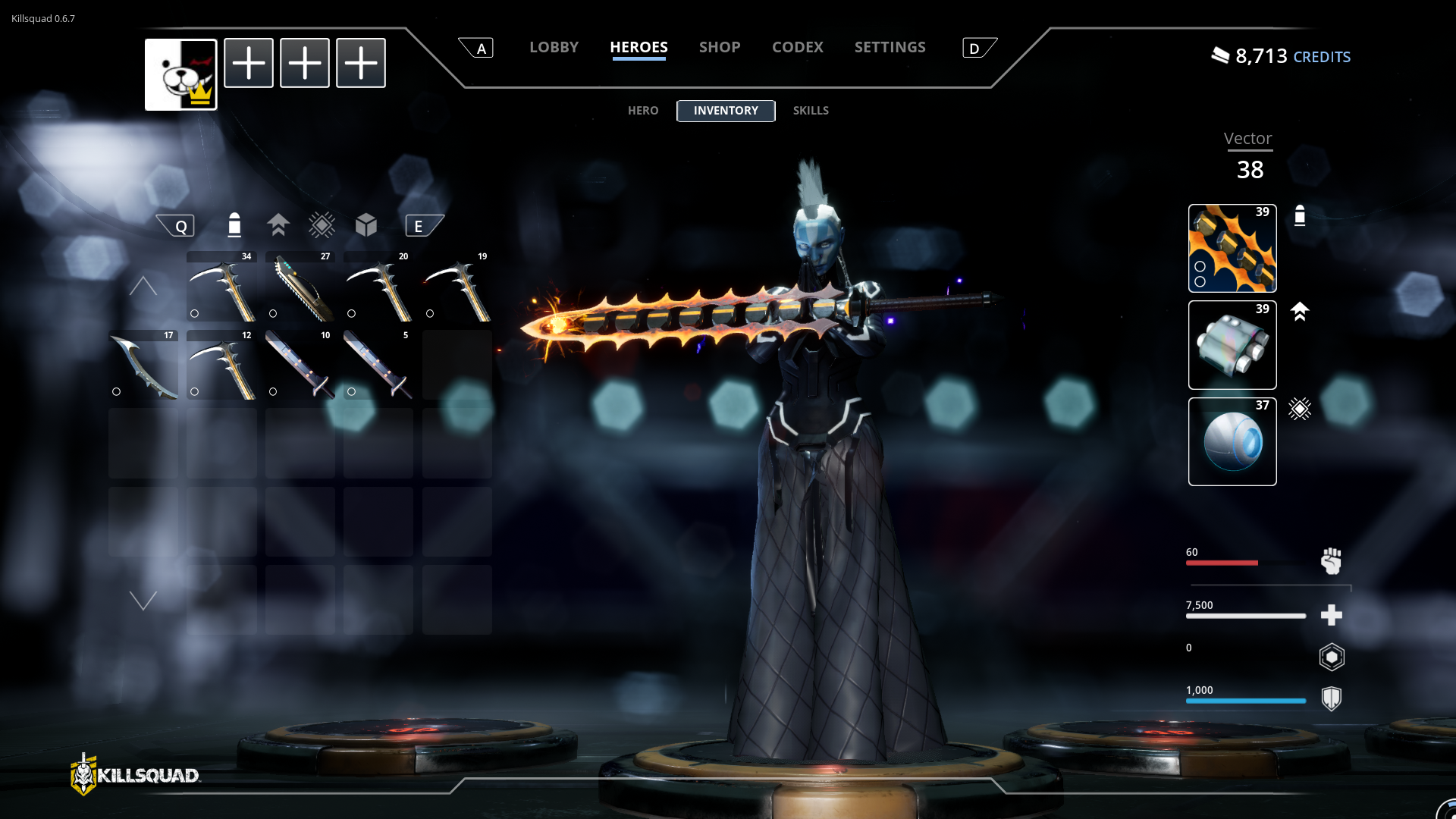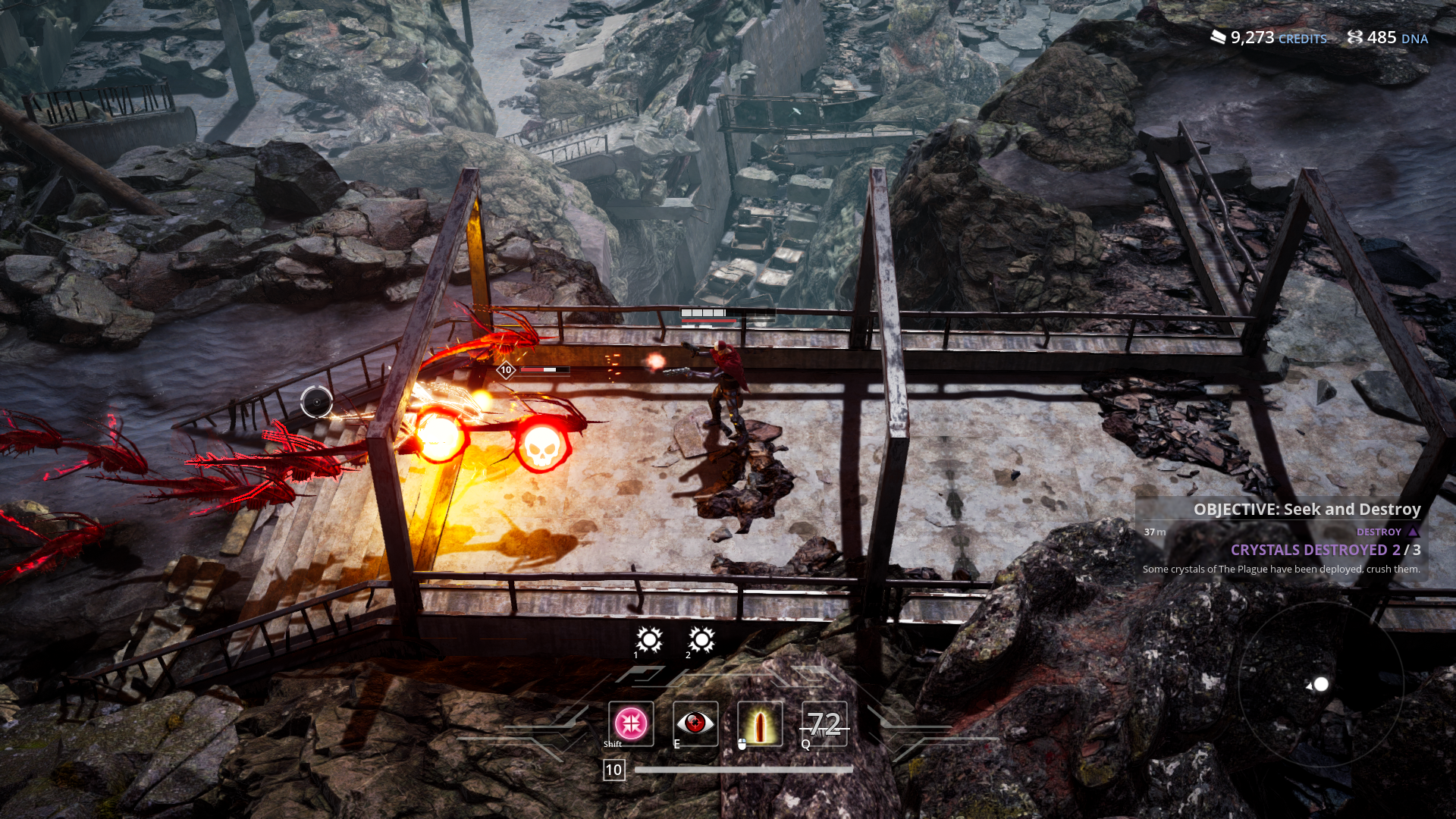Would Heroes of the Storm and Helldivers make a good mix?
Type: Multiplayer
Genre: Action RPG
Developer: Novarama
Publisher: Novarama
Release date: 16 July 2019
Overview
Killsquad is an aRPG-meets-MOBA game currently in Early Access, where up to four players can team up and complete different types of missions. There are currently four different heroes, with contracts taking the players to three different planets, each one with its enemies and environments. The game’s core features are already implemented solidly, with detailed graphics and an expected Early Access period of six months.
Run, shoot, cut
Killsquad’s gameplay doesn’t differ a lot from other games like Helldivers, but also changes based on the hero picked: there are four of them, two ranged and two melees, with at least two new heroes coming before the official release. There’s Troy, a famous smuggler, gambler and gunslinger who shoots with his plasma guns and clones himself. There’s Zero, a violent medical robot who shoots a giant laser cannon while also leaving medkits for his allies. Then there’s Kosmo, once dead cargo technician, now fighting with a giant mallet, his kit being all about AoE damage. Finally, Cass is a monk warrior, fighting with a sword in a flurry of slashes and teleports, becoming invisible when things get tougher.

All these heroes fit in a particular playstyle and are balanced in a way that no one is stronger than the other, but unfortunately they also feel uninspired, with none of them having an original design and, while uninspired doesn’t mean unfun (and slashing giant monsters with Cass is A LOT of fun), something could have been done to offer a more original gameplay. Each hero offers five different abilities that can be upgraded every two levels during the mission, adding powerful effects to them: Cass’ shuriken can bounce between enemies, Kosmo’s vortex lasts longer and so on. Unfortunately, the heroes’ unoriginal design gets mirrored in these power-ups that do not feel satisfying enough to unlock during the game, mostly because the upgrades are nothing groundbreaking. The fifth ability is the ultimate and can be unlocked once the character reaches level six: this, like in all MOBA games, is the hero’s most powerful ability and it’s able to deal massive damage or inflict powerful crowd-control effects to the enemies.
Combat in Killsquad is fast, flashy and ultimately fun. Whether you’re shooting or slashing through masses of enemies, the game feels solid and well constructed, especially when playing in a four-player squad with all different heroes. The feedback during combat is near perfect and, especially with melee characters, the player is almost able to feel the blows he inflicts on the enemies.
With Killsquad being a coop game, some abilities perform better when playing in a group, like Cass’ invisibility or Zero’s medkits, but combat is enjoyable also when playing solo.
Why MOBA, then?
The possibility to upgrade the heroes’ abilities is very similar to the one that can be found in a lot of different MOBAs, especially Heroes of the Storm. This because both games do not only raise the damage the ability inflicts, but also change the way the ability works, usually by adding secondary effects, like AoE damage, crowd-control abilities or synergies. This, combined with the fact that the progress doesn’t get carried over the end of a contract (meaning that the characters start at level 1 at each mission start), make it so that this game is a strange combination of aRPG and MOBA elements.
The expendables
Contracts are the missions players can pick up and play. There are different kinds of contracts as of now, divided into three different tiers, but they all have a similar structure: the player spawns, walks a long way to the objective and then (hopefully) completes it, usually by fighting a big battle or a boss. There are several different goals, like escorting an armored convoy, defending an antenna or killing a powerful enemy, with more to come within the early access period. Contracts unfortunately have two main problems: the first one is the “run to the objective” sections that take up the first half of the mission, which are all very similar, especially when playing on the same planet multiple missions in a row. The second problem is the low variety of enemies that keep showing even on higher-level missions: this makes contracts very repetitive, even when the objective is different, and some work should be dedicated to diversify environments, mission-flow and the poor creatures that are going to be beaten up by the players.

And the loot?
Loot is handled in an atypical way in Killsquad. Unlike most aRPGs, here there are no actual item drops, but only crafting materials and credits. Credits are used to buy items in the shop and materials are necessary for upgrading the equipment pieces.
Every character has three slots: weapon, support gear and prototype gear. Every slot can accommodate one item, which in turn has a vector value: the average vector value is also the level of the character. Items can be acquired in the shop: you choose which category of item you want, spend the amount of credits required, and get a random item from that category with a rarity class based on the level of the character. The item is shipped with a vector value and one or more disabled abilities: these are passive effects that can be installed by spending the requested amount of materials and usually add crowd-control, AoE damage or similar results. Installing passives on items is usually unnecessary on lower vector levels whereas, on higher levels, finding the items with the wanted abilities makes the shop feel like a slot machine.

Graphics
The game delivers exceptionally good graphics for being indie: environments, enemies, abilities and light effects all look beautiful.
The design of maps isn’t particularly inspired but still good looking, although some repetition can be found, especially in the “Palace of Pain” map where everything looks very similar.
Combat, graphically speaking, is very colorful and chaotic, like a good fight should be, but thanks to the precise coloring, identifying the enemies’ area of damage is still easy. Projectiles, instead, are more difficult to locate and dodge, making sure that keeping the attention is vital to stay alive.

Future developments
Killsquad’s roadmap details the future updates that the game is going to receive: once every month, content will be added to the game in the form of new factions, enemies, playable heroes and the long awaited spec-ops tier contracts. The next big update is already in a playable beta-state and adds an endgame arena called “Colosseum of the Unseen”, which brings destruction and enemy count to the next level.
Verdict
Killsquad is a fun mix of two genres that blend to create a fast-paced, fluid and fun experience. Combats hits the spot when playing on a full team, but to my surprise everything works even when going solo. Outside the combat sphere everything needs adjustments, with loot and contracts being the aspects that need more work.
Right now the game has its core done and solidly, too. With more content and the right fixes in the right places, Killsquad could become an exceptional casual aRPG to play with friends.










